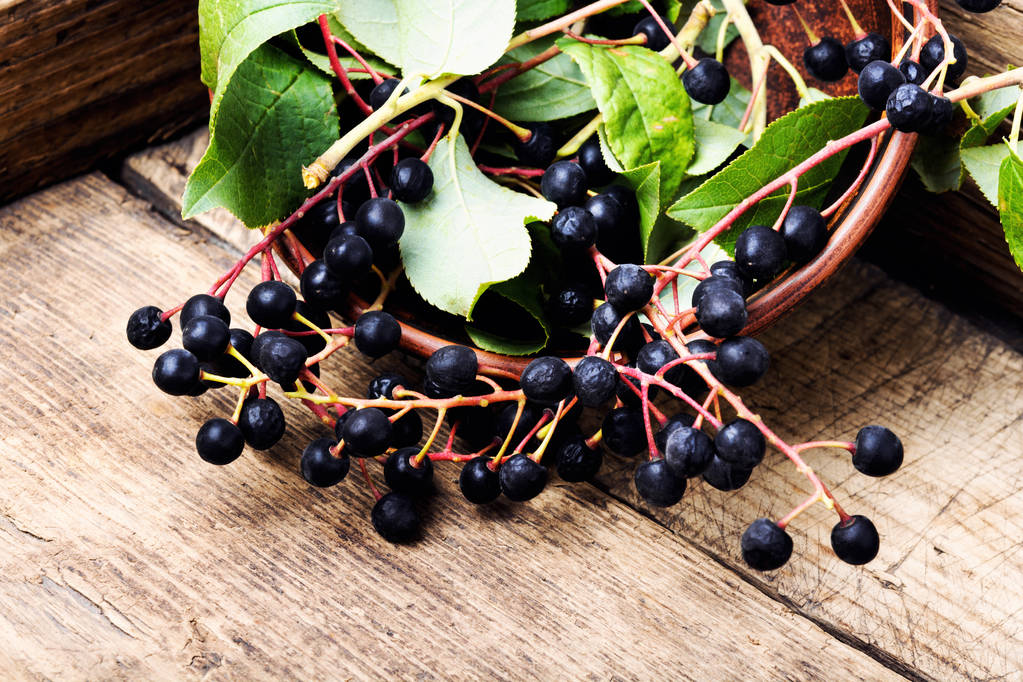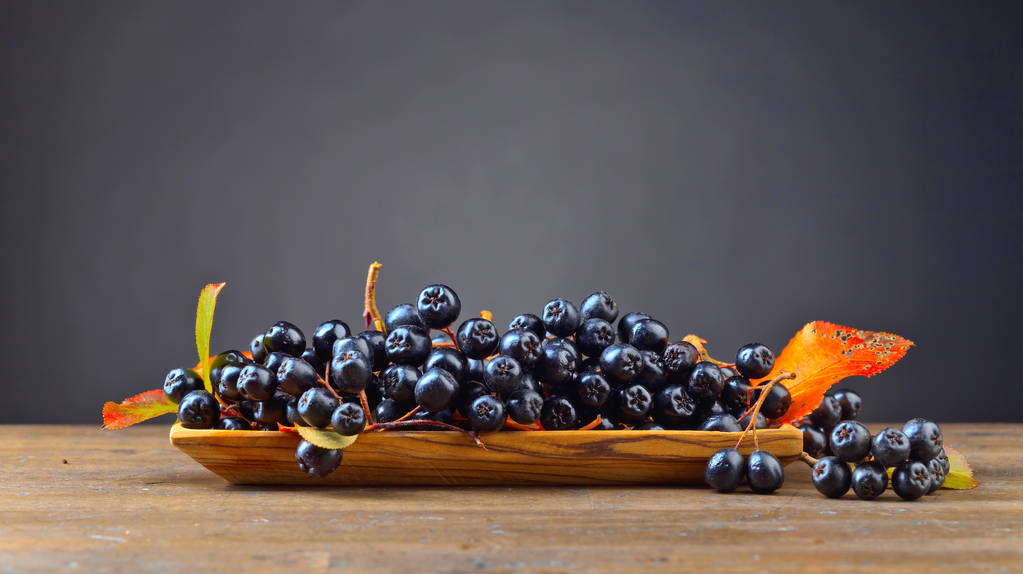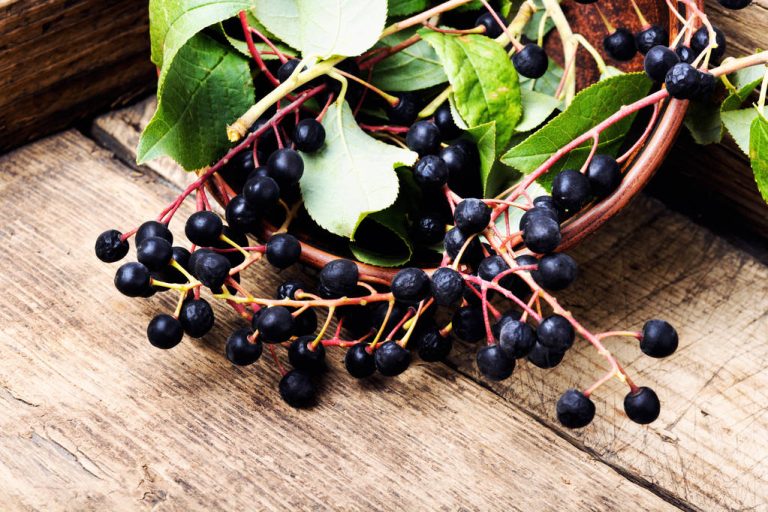The aronia berry, also called chokeberry, is round, small, dark blue to almost black and a real superfood. Aronia is said to contain a lot of antioxidants, anti-inflammatory, antiviral and antibacterial.
In addition, the small berries are full of vitamins and minerals that can have a positive effect on the metabolism and immune system. They are suitable for cooking and baking, can be used raw, dried, as a powder or juice. And because the aronia is a miracle berry, it is said to help with diabetes, fight cancer and protect the liver and stomach.

Three types of berries: Aronia melanocarpa, arbutifolia and prunifolia
Aronia plants are a genus of plants in the rose family. The aronia bush originally comes from eastern North America, where the Indians have known and used the chokeberry for centuries. The white multiple flowers and light green leaves with the dark red buds of the one to two meter high shrub are extremely attractive to look at. There are only three “real” subspecies of the chokeberry, all others belong to other plant genera:
Aronia melanocarpa (nero), the black chokeberry, is the most common variety. It also has the highest antioxidant content.
Aronia arbutifolia, the tomentose chokeberry.
Aronia prunifolia, a natural hybrid of the above two species but rarely if ever cultivated.
All three types of chokeberry are relatively resistant to pests and quite undemanding plants. They prefer rather moist areas such as moist forests or swamps.
Cultivation and use of the chokeberry
Although native to the US, aronia berries are relative newcomers to the superfood market there. The shrubs grow wild in their range, but were until recently cultivated in the US and Canada as ornamental shrubs rather than as berry suppliers because of their pretty appearance. In Russia and Europe (especially in Eastern Europe and the Caucasus region) the chokeberry has been used commercially since the beginning of the 20th century. Aronia melanocarpa is mainly cultivated, since folk medicine classifies its healing properties as higher.
The raw chokeberries taste very tart and sour, which is why you hardly eat them alone. They are usually dried and used like raisins in various dishes or cakes. Or you squeeze juice from the small dark berries, which is drunk as “medicine”. At least the aronia juice also tastes “medicinal” due to the tannic acid it contains: tart, bitter and sour like the raw berries. In Russia the dried berries are very popular for cooking, in Europe it’s more like aronia powder mixed into smoothies or similar. In addition, the powder of the chokeberry is processed in capsules.
Aronia jam and other recipes
Aronia berries are not a special taste hit on their own. That is why the chokeberry is usually processed together with other sweet fruits or berries to make jam, compote, fruit spread or aronia syrup. For example, jam with raspberries is delicious, where the fruits are mixed in a ratio of 1:3 (three parts raspberries). The recipes on the web also include various cakes, desserts or spicy chutneys with chokeberries.
Of course you can also make your own aronia juice. To do this, you simply free the fresh berries from the stalks, wash them and squeeze the berries. Then mix with other fruit juice (apple, pear, elderberry or similar) or boil down with sugar, lemon and a little cinnamon to a syrup. Incidentally, aronia syrup also tastes great in Prosecco.
What is the effect of the chokeberry?
Aronia berries contain tannins, the pigments responsible for the dark color (anthocyanins) and other secondary plant substances, the flavonoids. Together with vitamins A, B2, C, E, K and folic acid, they should all have an antioxidant and anti-inflammatory effect. In addition, the antibacterial and antiviral effect, for example in flu and colds or cystitis, was examined in several studies.
In 2006 and 2010, the findings on the effects of Aronia melanocarpa, which has the highest proportion of anthocyanins, were summarized in meta-studies. In the 2010 meta-study, chokeberries were also attributed anticarcinogenic and antimutagenic effects. Recent investigators also seem to ascribe a protective effect on the liver, heart, stomach and against radioactive radiation to chokeberry. Last but not least, the ingredients of black chokeberries are said to lower blood sugar levels and thus have a positive effect on diabetes.

So is the juice of the chokeberry actually medicine?
Reading through the list of purported effects, it’s easy to get the idea that chokeberry juice isn’t just supposed to be medicine, it’s actually medicine. This almost makes you forget the not necessarily appealing taste. A natural “remedy” would be a good thing, especially for common and unpleasant illnesses such as flu or cystitis. A few sips of berry juice a day and you’re healthy, without any medication – at least that’s what some marketing promises say.
However, that is not entirely correct. Because although study results on chokeberries suggest a stimulating effect on the immune system, this has not been proven. Because all investigations were either only carried out in the test tube or on mice or were only observational studies. The latter are not very meaningful, since the framework conditions do not rule out external influences or cross-effects. For the possible effect against cystitis, there is even only one study. And the same applies in all other cases: the effect is possible, but not proven with certainty. A lot of research is still needed to be able to say whether the juice of the chokeberry really has a medicinal effect.

